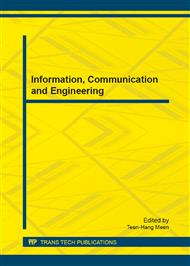p.380
p.386
p.392
p.398
p.404
p.413
p.419
p.424
p.430
Applications of Thermostable Cellulolytic Bacteria to Agricultural Wastes
Abstract:
At the present time the demand for energy, goods and materials is surging because of advanced technology and population growth. However, the resources on earth are limited. For this reason, the issues concerning using the resources effectively and changing them into energy are important. Taiwan creates a vast amount of agricultural waste every year. Traditionally, the agricultural waste would be burned and buried. It is not only the fact that we can’t reuse and recycle the agricultural waste, but also the problem of air pollution when they were burned. Therefore, it is necessary to create a solution that can recycle and reuse the agricultural waste, and change them into energy. The agricultural waste is full of wood fiber, and it can be reduced by a microorganism method. This study will use a common agricultural waste which is cane because it is one of the main agricultural products in Taiwan. The wood fiber in cane will be added to the thermostable cellulolytic bacterial Geobacillus thermoleovorans T4 which is found from in sugar refinery wastewater found often in Southern Taiwan. The results showed that T4 can increase the rate of reducing sugar. The reduced sugar can then translate into energy. This method can help to recycle and reuse agricultural waste, and it will decrease environmental pollution.
Info:
Periodical:
Pages:
404-409
Citation:
Online since:
February 2013
Authors:
Price:
Сopyright:
© 2013 Trans Tech Publications Ltd. All Rights Reserved
Share:
Citation:


